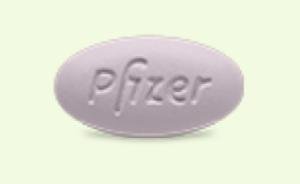Ibrance Side Effects
Generic name: palbociclib
Note: This document contains side effect information about palbociclib. Some dosage forms listed on this page may not apply to the brand name Ibrance.
Applies to palbociclib: capsule oral, oral capsule, oral tablet.
Serious side effects of Ibrance
Along with its needed effects, palbociclib (the active ingredient contained in Ibrance) may cause some unwanted effects. Although not all of these side effects may occur, if they do occur they may need medical attention.
Check with your doctor immediately if any of the following side effects occur while taking palbociclib:
More common
- Black, tarry stools
- bleeding gums
- blood in the urine or stools
- chest pain
- chills
- cough
- difficulty breathing
- fever
- hoarseness
- loss of voice
- lower back or side pain
- nosebleeds
- painful or difficult urination
- pale skin
- pinpoint red spots on the skin
- sore throat
- sores, ulcers, or white spots on the lips or in the mouth
- swelling or inflammation of the mouth
- swollen glands
- trouble breathing
- ulcers, sores, or white spots in the mouth
- unusual bleeding or bruising
- unusual tiredness or weakness
Incidence not known
- General feeling of discomfort or illness
- redness, swelling, or pain of the skin
- scaling of the skin on the hands and feet
- thickening of bronchial secretions
- tingling of the hands and feet
- ulceration of the skin
Other side effects of Ibrance
Some side effects of palbociclib may occur that usually do not need medical attention. These side effects may go away during treatment as your body adjusts to the medicine. Also, your health care professional may be able to tell you about ways to prevent or reduce some of these side effects.
Check with your health care professional if any of the following side effects continue or are bothersome or if you have any questions about them:
More common
- Blurred vision
- decreased appetite
- diarrhea
- dry skin
- hair loss or thinning of the hair
- increased tearing
- lack or loss of strength
- loss of or change in taste
- nausea
- skin rash
- vomiting
Less common
- Dry eye
For Healthcare Professionals
Applies to palbociclib: oral capsule, oral tablet.
Hematologic
Very common (10% or more): Decreased white blood cells (95%), decreased neutrophils (94%), decreased hemoglobin (83%), decreased lymphocytes (81%), neutropenia (80%), decreased platelets (61%), leukopenia (39%), anemia (24%), thrombocytopenia (16%)
Frequency not reported: Febrile neutropenia[Ref]
Respiratory
Very common (10% or more): Upper respiratory infection (up to 31%), epistaxis (up to 11%)
Common (1% to 10%): Pulmonary embolism, interstitial lung disease, pneumonitis[Ref]
Other
Very common (10% or more): Fatigue (37%), asthenia (17%), pyrexia (12%)[Ref]
General
Most common adverse reactions (10% or greater incidence): Neutropenia, leukopenia, fatigue, anemia, infections, nausea, stomatitis, alopecia, diarrhea, thrombocytopenia, decreased appetite, vomiting, asthenia, peripheral neuropathy, and epistaxis.[Ref]
Gastrointestinal
Very common (10% or more): Nausea (35%), stomatitis (30%), diarrhea (26%), vomiting (16%)[Ref]
Dermatologic
Very common (10% or more): Alopecia (33%), rash (18%), dry skin (12%)[Ref]
Metabolic
Very common (10% or more): Decreased appetite (16%)[Ref]
Nervous system
Very common (10% or more): Peripheral neuropathy (13%), dysgeusia (10%)[Ref]
Immunologic
Very common (10% or more): Infections (e.g., nasopharyngitis, upper respiratory tract infection, urinary tract infection, oral herpes, sinusitis, rhinitis, bronchitis, influenza, pneumonia, gastroenteritis, conjunctivitis, herpes zoster, pharyngitis, cellulitis, cystitis, lower respiratory tract infection, tooth infection, gingivitis, skin infection, gastroenteritis viral, respiratory tract infection, respiratory tract infection viral, folliculitis) (60%)[Ref]
Frequently asked questions
- Will insurance pay for the cost of Ibrance?
- Is Verzenio better than Ibrance?
- Can you take Verzenio after Ibrance fails?
- How long can you take Ibrance?
- How common is hair loss with Ibrance?
- How does Ibrance kill cancer?
- How effective is Ibrance?
- Is Ibrance a form of chemo?
More about Ibrance (palbociclib)
- Check interactions
- Compare alternatives
- Pricing & coupons
- Reviews (82)
- Drug images
- Latest FDA alerts (1)
- Dosage information
- Patient tips
- During pregnancy
- FDA approval history
- Drug class: CDK 4/6 inhibitors
- Breastfeeding
- En español
Patient resources
Professional resources
Related treatment guides
References
1. Product Information. Ibrance (palbociclib). Pfizer U.S. Pharmaceuticals Group. 2015.
Further information
Always consult your healthcare provider to ensure the information displayed on this page applies to your personal circumstances.
Some side effects may not be reported. You may report them to the FDA.

